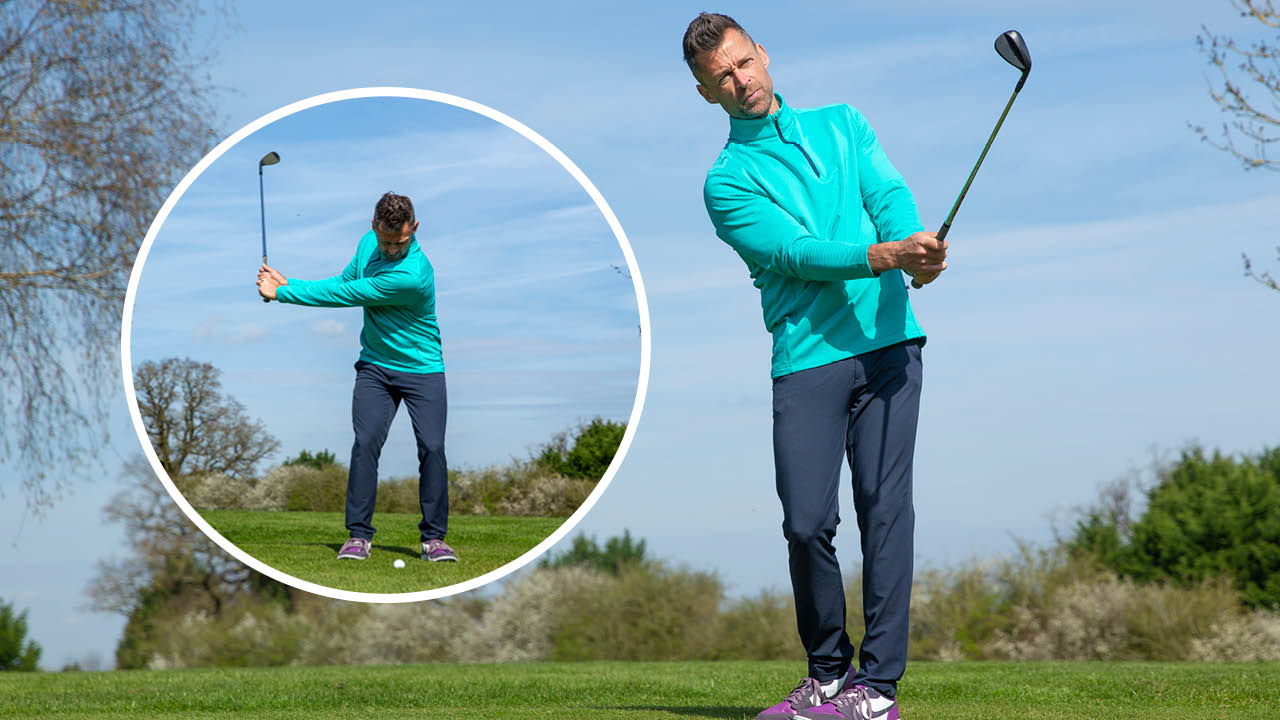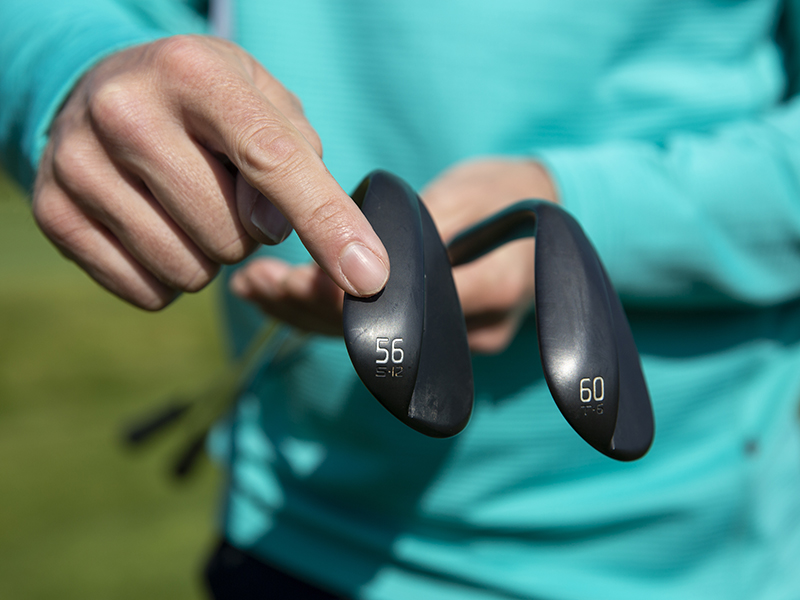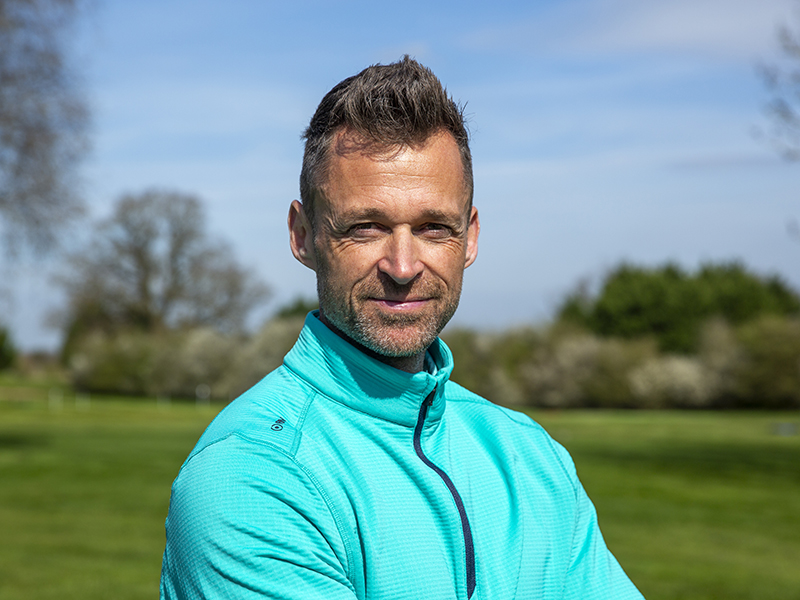These 3 Pitching Mistakes Are Holding You Back... Sharpen Up Your Short Game With PGA Tour Coach James Ridyard
Short game specialist James Ridyard talks us through three common pitching mistakes and how to avoid them...


Picture the scene... after reading the best golf tips and practicing your long game for weeks on the range, you've smashed your drive down the middle of the fairway at the long par-5. You then boldly step up and hit a well-struck second shot to within fifty yards of the green, and walk up to your golf ball feeling great.
As you pull out your wedge and play your pitch shot, with the prospect of a priceless birdie presenting itself, you duff it five feet in front of you and walk off the hole with a seven!
This scenario is unfortunately all too familiar for many amateur golfers, with pitching problems costing shots and crushing confidence. In the interest of improving this picture for all golfers, we sought the advice of short game specialist and PGA Tour coach James Ridyard, who shared three common pitching mistakes and how to avoid them...
Pitching Mistake No.1 – Ball Flight
Typically, amateur golfers think they need to hit the golf ball much higher than they actually do. If you were trying to throw a ball from A to B you probably wouldn't launch it as high as you could to cover the distance. If anything, you would actually launch it fairly flat.
The golf ball you use will affect your decision on ball flight, as height will help if you are playing with a rock solid ball. Ideally, you should be looking for a golf ball that you can have some spin control over, which will allow you to bring the ball flight down. This will give you the best of both worlds, as spinning the golf ball will give you stopping power and the right carry distance.

Set-up and ball position will make a difference to your ball flight, but you also need to play the right type of golf ball
When players counter-productively try to hit the ball high with a pitch shot, they tend to try and add loft through impact – which results in a loss of shaft lean too quickly. Therefore, the most simplistic way to bring your ball flight down is to add more shaft lean at impact.
One other way you can achieve this is by putting the ball position fractionally further back in your stance. If you prefer to play the ball from the centre of your stance, you will need to pivot a little bit better and hold a little more angle in your trail wrist (as you can see in the video above).
Subscribe to the Golf Monthly newsletter to stay up to date with all the latest tour news, equipment news, reviews, head-to-heads and buyer’s guides from our team of experienced experts.
This will lean the club forwards and deliver it with less loft, resulting in a flatter ball flight.
Pitching Mistake No.2 – Carry Distance
Often players rely too much on touch and feel, but that isn't logical when you consider how much pitching practice that average amateur golfers get. The best thing to do in the first instance is set up some sort of 'clock face' system.
Start with your core shot, and the best reference point, which will be with your left arm parallel to the ground in the backswing (for right-handed golfers). You can label this as nine-o-clock on the clock face, and you need to work out how far that shot goes with your wedges.

Short Game Expert James Ridyard demonstrating a nine-o-clock backswing with a wedge
Following that, you can then take something off that shot and perhaps go back to seven-o-clock, or seven-thirty. You can then complete the process by also hitting some shots from what would be ten-o-clock or ten-thirty on the clock face, recording your stock yardages from each of those three backswings.
If you have three different wedges in your bag, that will be nine different distances recorded, which will help you in most situations on the golf course to select the right club and shot that is required.
Pitching Mistake No.3 – Hitting Full Shots With Wedges
When playing a wedge shot, it's important not to force distance. The furthest green in the video above is around 80 yards away, and I could get my 60 degree wedge there, but I would have to step on it a little bit.
An easier option, if I want to retain control over the ball and the spin, is to drop down a wedge. When you are swinging full throttle there is obviously a higher potential for a mis-hit, which launches the ball higher but doesn't really help you with the extra distance you are looking for.

Going down a wedge, from a 60 to a 56 degree, will allow you to swing the club more smoothly
In this situation, I would switch to my 56 degree wedge, and instead try to swing it more smoothly with the right tempo. Going for the furthest green with this club should only require that nine-o-clock swing that I mentioned earlier, and I shouldn't need to force it.

James Ridyard is a prominent figure in the world of golf, renowned for his expertise in short game instruction and coaching. Throughout his career, Ridyard has amassed a wealth of experience working with golfers of all levels, from beginners to professionals and major winners. His unique approach to coaching combines a deep understanding of biomechanics, physics, and psychology, allowing him to tailor his instruction to the individual needs of each player.
Ridyard is widely recognised for his innovative teaching methods, which emphasise simplicity, efficiency, and effectiveness. He is known for his ability to break down complex concepts into easy-to-understand principles, empowering his students to improve their game rapidly and consistently.
-
 Charlie Woods Shows Powers Of Recovery In Front Of Dad Tiger During First Two Rounds Of Junior Orange Bowl
Charlie Woods Shows Powers Of Recovery In Front Of Dad Tiger During First Two Rounds Of Junior Orange BowlWoods has made a solid start to the four-day tournament in Florida after twice fighting back from tough positions at Biltmore Golf Course, Coral Gables
-
 L.A.B. Golf OZ.1i vs TaylorMade Spider 5K-ZT Putter: Read Our Head-To-Head Verdict
L.A.B. Golf OZ.1i vs TaylorMade Spider 5K-ZT Putter: Read Our Head-To-Head VerdictTaylorMade have joined the battle of zero torque putters with the Spider 5K-ZT, but L.A.B. Golf is the pioneer of zero torque technology. Let's see how the Spider 5K-ZT matches up against the L.A.B. OZ.1i